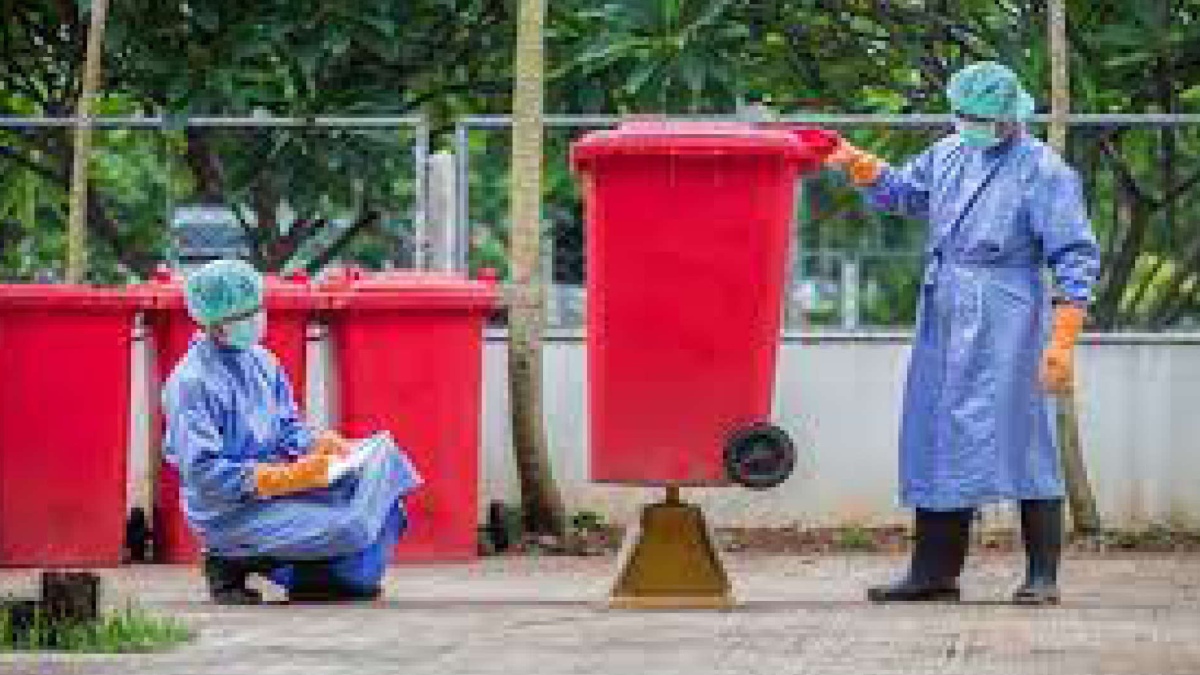
Biomedical waste is composed of animal and human waste, treatment equipment, for instance, syringes, needles, and the other different kinds of amenities in the process of research and treatment (Bio-Medical Waste Management Rules, 2016). Adequate biomedical waste management concerning the proper rules and regulations were consistently overlooked for years, specifically in a developing country like India.
India, the second most populated country worldwide after China and the world’s second worst-hit country by COVID-19 officially, and unofficially it is undoubtedly the worst affected. India now has 20.7 million confirmed cases of the deadly Covid-19 virus. However, the recovery rate among Indian population is also very remarkably high. The administration has also taken rigorous steps to tackle Covid-19, but this has resulted in piles of Bio-medical waste. According to Central Pollution Control Board (CPCB) data, approximately 4527 tons of bio-medical waste was generated in December 2020. This has unduly pressurised the waste management system of country. Lack of resources has further added to this problem of waste management. India faced severe consequences during the second wave of COVID-19 and responding to which the medical system is also overburdened. These critical conditions have also posed a challenge in the administration to manage the bio-medical waste generated in treating the patients found positive with Covid-19. The country has a total of 238,170 healthcare facilities, out of which 87,267 are bedded while the remaining 151,208 are non-bedded healthcare facilities (HCFs) generating BMW. According to a study, improper management and disposal of bio-medical waste could expose freely roaming animals and humans with diseases like Covid-19. Thus, it becomes imperative to think for effective management strategies and spare some resources to manage bio-medical waste.
Untreated and improperly managed BMW is a potential source of infection. Millions of contaminated personal protection equipment (PPE) (e.g., facemasks and gloves) would end up as wastes, which, if improperly managed, can pose environmental and health threats. In a recent study (Kampf et al., 2020) finds that the coronavirus can survive on material surfaces (e.g., metals, glass, and plastics) for up to 9 days. Such threats may be ameliorated in developed countries where green and sustainable waste management strategies, capable of containing such viruses, are practiced. However, the threats would be much higher in developing countries that have poor waste management strategies. In many developing countries, solid wastes are dumped in the open and in poorly managed landfills where waste pickers without wearing proper PPE would scavenge for recyclable materials (World Bank, 2019).
Thus, it is the right time to call upon the policymakers to ponder this problem, which could become an uphill climb later if not given due attention.
IMMEDIATE ACTION AND FUTURE POLICY RECOMMENDATIONS:
The lockdown had led to enhancement in the origination of the food and packaging waste from the domestic households, which should be disseminated as per the current waste accumulation rules. The occurrence of the collection of biodegradable waste could be modified according to the locality. However, the recyclable waste could be reduced according to the accessibility of the people as well as the trucks. As they should be helped to accumulate them in the sealed bags for a longer tenure. There would be more generation of infectious waste and toxic waste if more heed is given to sanitary products and other health care products. So, it is very much necessary that it should be accumulated in double lined sealed bags with a particular symbol. The food packaging and the other waste should be handled with possible care and caution as it should be carried in a double layered compostable bag.
There would be less charge on the management of the hazardous waste as more waste from the households is being compensated by the smaller number of wastes from the restaurants, eateries and the other complexes. It is necessary to be conscious for the exposure of the waste as long as it exposes the pathogen to spread. The people living at their home required to be more prudent as there is a need of dissemination of the waste. The propagation of the same should be done through advertisements, newspapers or other source of media.
Few Policy recommendations deliberately made for the policymakers which might assist a system to tackle the pandemic:
a) Identification of the key role: This is the prime duty of the government to recognize the part which has to be played by sanitation workers. For instance, UK government has specifically given key worker status to their workers as the government would be fulfilling all the requirements of their family during the COVID crises so they could continue their services.
b) Formulation of the Global Common Platform of Knowledge: It is very much necessary to formulate a platform as well as foundation of knowledge so that the people should gain the know how of handling the waste as they could curb themselves in need of the hour.
c) Pervasive standardization of the coding: The universal standards for the color coding are very much significant for disseminating the bio medical waste. As it would provide assistance to the identification of the type and the characteristic of the waste. Proper training to the workers in the regard would also be very much helpful.
d) Technology Based Solutions: To deliver the high quality by products, it is very much necessary to emphasize the gasification, hydrothermal, and carbonization kind of techniques. Additionally, there should be investment of research into it.
e) Implementations of the principals from circular economy: To reduce the amount food wasted, re-utilization of the food waste and nutrient recycling are the major fundamentals of the circular economy in the food system and should be executed both at producer as well as consumer level. Furthermore, the circular-based models’ execution would assist in deviation of the accumulated waste from the disposal sites to the recyclable plants; however, it would also help in declining the generation of the waste in the initial place.
f) Propagation Regarding Circular economy: People are not knowing about the methodology behind the circular economy so it is the dire need to aware people regarding the concept of circular economy. The fabrication of the recyclable products would, for instance, bioplastic and biodegradable products should be highly promoted as well rewarded.
g) Moving from awareness to Action: Just by propagating the general public regrading the same would not help rather they should be highly motivated to implement all the schemes practically. Media campaigning would really assist in effecting the people’s behavior and would also assist in the transformation of their musings to converting the economy into a greener one.















